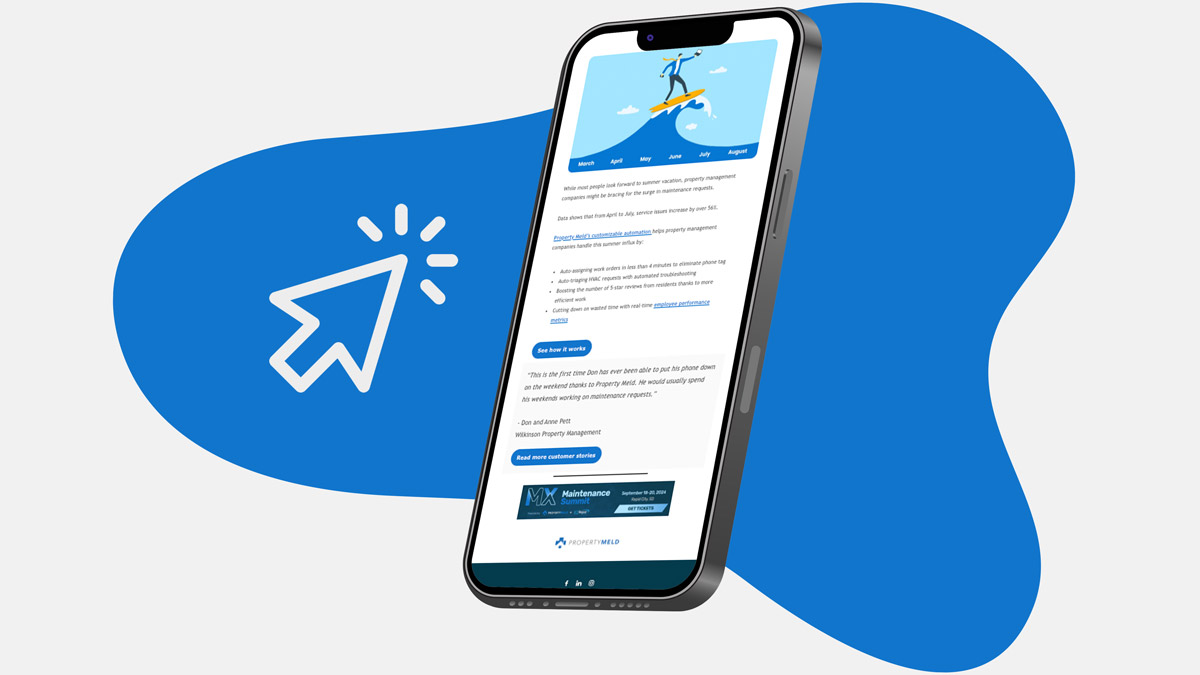At the recent MX Summit, Brad Johnson, CEO of Profit Coach, took the stage to share his expertise on a topic that’s often seen as a necessary burden in property management but holds immense potential for profitability: maintenance. With his extensive experience in real estate and property management, Brad delivered a data-driven session that highlighted how maintenance can be a significant revenue stream when approached with the right mindset and strategy.
Brad Johnson’s Journey and Expertise
Brad Johnson isn’t just another expert in the field; he’s a seasoned professional with firsthand experience running a 1,300-unit single-family property management company. As the CEO of Profit Coach, Brad has dedicated himself to helping entrepreneurs build highly profitable, self-managing companies. While he’s currently navigating life with a growing family (three kids under three, to be exact), Brad’s passion for maintenance is clear: he knows how to turn this aspect of property management into a substantial revenue generator.
Why Maintenance Matters in Property Management
Maintenance often evokes mixed feelings in the industry. Some view it as a profitable opportunity, while others see it as an unavoidable chore. Brad emphasized that property management and maintenance are distinct yet interconnected businesses, each with its unique profitability structures. His goal? To guide property managers from “operational fog” to “operational clarity,” shifting from gut-based decisions to predictable, data-driven outcomes.
Understanding Revenue Per Unit (RPU)
One of the key metrics Brad focused on was Revenue Per Unit (RPU), which encompasses all revenue generated from management fees and ancillary services per unit. This metric plays a crucial role in determining profitability. Data from industry studies showed that RPU has grown significantly, rising from $171 in 2018 to $222 in 2022, with the top 25% of the industry now hitting this benchmark. Brad stressed that even a small increase in RPU could dramatically impact company profits. For instance, a $15 increase in RPU can result in a 100% increase in profits.
The Value vs. Fees Debate
Brad tackled a crucial distinction: value versus fees. While fees are the monetization strategy, value is about delivering desirable outcomes for residents, owners, and vendors. He cautioned against the potential government scrutiny over “junk fees” and stressed the importance of communicating the tangible value that maintenance provides. It’s not just about charging for a service; it’s about demonstrating how that service enhances the property’s performance, tenant satisfaction, and overall investment return.
Choosing the Right Maintenance Structure
Brad outlined three main maintenance structures:
- Straight Third-Party: Maintenance services are entirely outsourced to third-party vendors.
- Outsourcing to a Separate Entity: Maintenance is managed through an affiliated entity.
- In-House Maintenance: The property management company maintains a dedicated team for handling maintenance.
Each structure has its pros and cons, and the right choice depends on factors such as company size, desired control, and growth goals. For companies managing around 400 units or more, transitioning to an in-house maintenance team can be particularly advantageous.
Monetization Strategies for Maximizing Maintenance Profitability
Brad introduced several monetization strategies, tailored to different maintenance structures. These included:
- Markup on Invoices: Adding a percentage markup to third-party maintenance services.
- Vendor Discount Programs: Leveraging the company’s size to negotiate discounts with vendors, which can then be passed on to owners or used to boost profitability.
- Technician Utilization: Tracking and optimizing how efficiently in-house technicians are deployed.
Brad emphasized that regardless of the structure, the goal is to generate additional revenue while providing value to clients.
Key Metrics to Track for Maintenance Success
To start maximizing maintenance profitability, property managers must keep an eye on specific metrics, including:
- Maintenance Profitability: The benchmark is around 36%, with the top-performing companies hitting 34%.
- Labor Efficiency: Ensuring technicians are utilized effectively is crucial for maximizing profitability.
- Non-Labor Overhead: Keeping overhead expenses in check ensures the maintenance operation remains cost-effective.
These metrics provide the clarity needed to make data-driven decisions and begin maximizing maintenance profitability.
Taking Action: Brad’s Final Recommendations
Brad left the audience with actionable steps to implement these insights:
- Evaluate Your Current Maintenance Structure: Is it the most profitable model for your company?
- Leverage Vendor Discount Programs: Use your company’s size to negotiate better deals and create additional revenue streams.
- Analyze Labor Efficiency: Identify areas for improvement in technician utilization and overhead expenses.
Brad Johnson’s presentation was a wake-up call for property managers to rethink their approach to maintenance. It’s not just a necessary task; it’s a valuable service that, when properly structured and monetized, can significantly boost a company’s bottom line. By focusing on key metrics, choosing the right structure, and communicating value effectively, property management companies can transform maintenance from a cost center into a profit driver.
Interested in learning more about maximizing maintenance profitability? Book a call with our experts to see how Property Meld can help.





